SSZTD30A April 2024 – June 2024 AFE7950-SP , TRF0208-SEP , TRF0208-SP
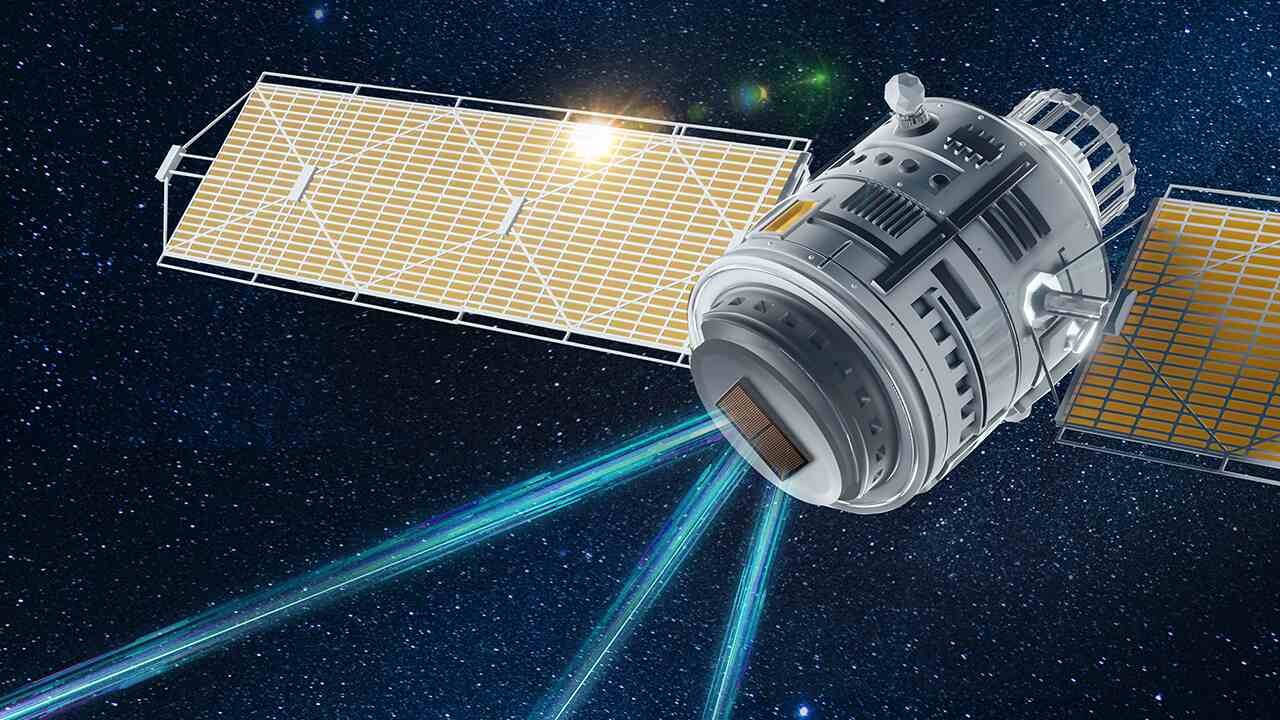
Introduction
Radar and cellular communication systems operate – both on the ground and in space – in specific frequency bands limited by government standards bodies such as the Federal Communications Commission. With most of the radio frequency (RF) spectrum already occupied, engineers had to find new ways to use it more efficiently, with encoding schemes such as quadrature amplitude modulation or phase-shift keying, along with multiplexing schemes such as time- or frequency-division multiplexing. The need for greater user capacity and faster data transmission inspired a new multiplexing scheme called spatial division multiplexing.
Benefits of phased array antennas
Spatial division multiplexing assigns users and frequencies by their physical location. The use of high-directivity antennas enables an RF system to focus its allocated frequencies on a particular area or set of users. For fixed, point-to-point communications such as wireless backhaul, a focused, stationary, single radiating antenna is a good choice. However, for moving or mobile and multiuser systems, a steerable, multibeam antenna such as a phased array is necessary.
Before phased array antennas, radars needed to mechanically spin the radar dish to scan for targets in all directions, which made tracking individual targets in a specific area challenging. Phased array antennas electronically steer the RF beam to track moving targets and control of the directivity and gain of the beam. These antennas also generate and receive multiple beams with digital beamforming to seek and track multiple targets.
Applying these same benefits to 4G and 5G cellular base station systems supports more users with much faster data rates. By having narrower beams from multiple input, multiple output (MIMO) or phased array antennas, the base station delivers more RF bandwidth to a smaller number of users in the beam direction.
Anatomy of phased array antennas
Phased array antennas consist of a number of smaller antennas arranged in a linear or rectangular planar array, controlled either in the analog domain with analog beam steering or in the digital domain with digital beam steering. Implementing a phase or time delay for each individual antenna enables the use of constructive and destructive interference to steer the RF beam in a particular direction.
In an analog beamforming system (see Figure 1), a component called a phase shifter controls the time delay electronically. Digital beam steering systems (see Figure 2) implement the time delay in the processor. Individual data converters performing digital beam steering digitize the information to or from each antenna, which increases the number of components, which then affects system size, weight, power and cost (SWaP-C).
 Figure 1 Analog beamforming
Figure 1 Analog beamforming Figure 2 Digital beamforming
Figure 2 Digital beamformingPhased array antennas in space
Satellite constellations that provide high-speed internet connectivity are a good example of phased array antenna systems in space. These satellites are placed into a low Earth orbit (LEO), which offers much lower latency to users, since the distance that signals need to travel is much shorter than the higher orbit of geostationary orbit satellites. Phased array antennas in space need to be small, light and low power, because the cost of launching satellites to orbit is, at minimum, about $2,600 per kilogram.
Improving SWaP-C in space
Designers have many ways to lower SWaP-C in ground or airborne systems, but these same options are often not available in space-based systems that require reliable radiation-hardened or radiation-tolerant products. Companies can complete their own radiation testing on commercial integrated circuits (ICs), called upscreening in very high volumes, but this is not economical for companies that are only launching tens or hundreds of satellites.
TI recommends using space-qualified ICs in most cases and offers a number of different device classifications (see Figure 3). With the expanding use of plastic packages in space such as space-enhanced plastic (SEP), Qualified Manufacturers List Class P (QML Class P) and QML Class Y, satellite manufacturers have the ability to reduce size and weight compared to traditional QML Class V ceramic packages.
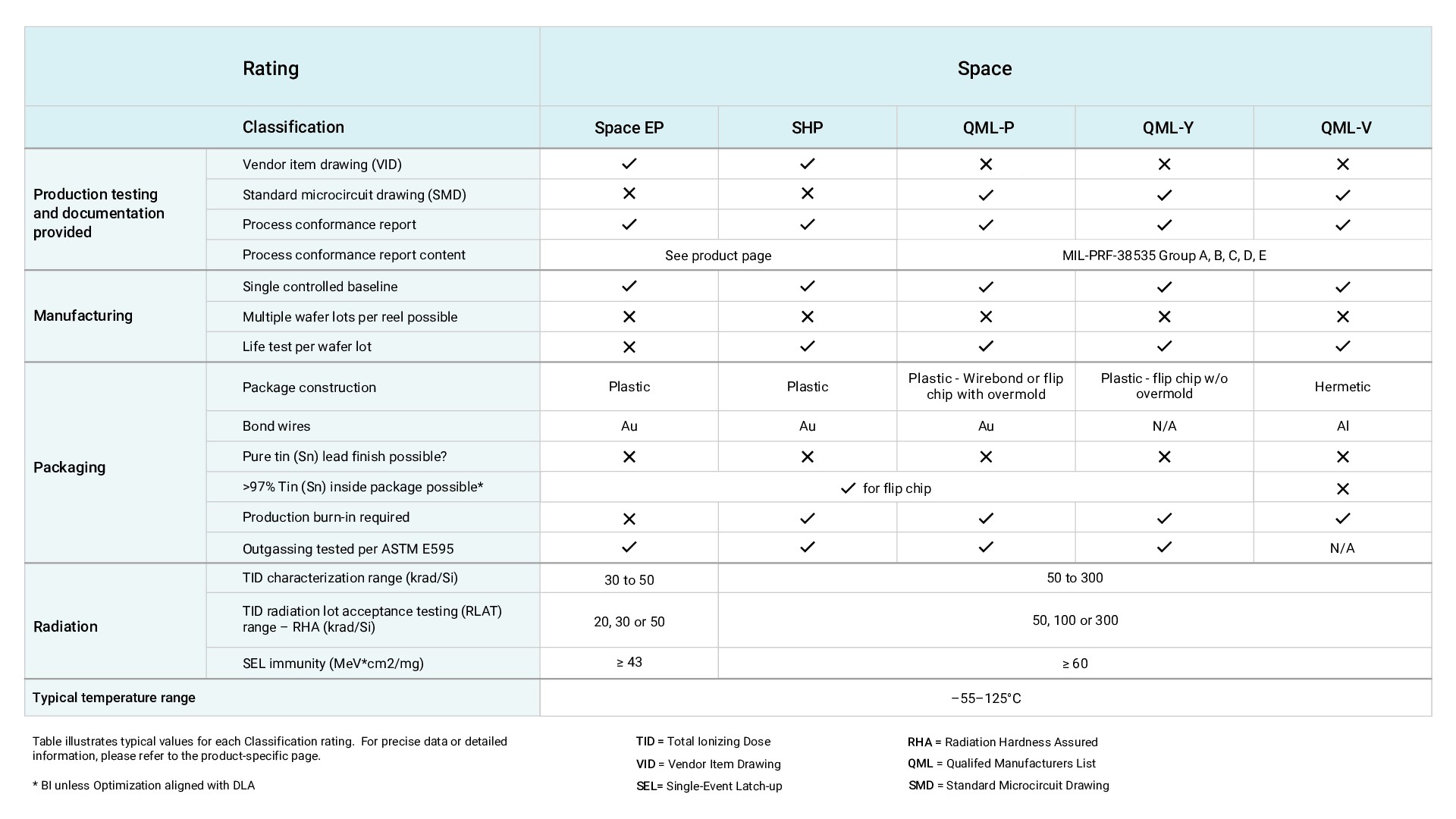 Figure 3 TI device
classifications
Figure 3 TI device
classificationsTI also offers reference designs targeted at phased array applications. For example, the 4T5R Space-Grade Integrated Transceiver Reference Design (see Figure 4) provides a radiation-tolerant, four-transmitter and five-receiver RF sampling solution through the X-band using the AFE7950-SP. This device integrates six 14-bit, 3GSPS analog-to-digital converters and four 14-bit 12GSPS digital-to-analog converters in a 17mm-by-17mm ball-grid array package. The reference design also includes the LMX2694-SEP, an up to 15GHz phase-locked loop synthesizer for the device clock, the LMK04832-SEP for clock and system reference distribution, multiple TRF0208-SEP devices used as active baluns, and power management. TRF0208-SEP devices can convert single-ended signals to differential signals with 16dB of gain and good linearity through 8GHz in a 2mm-by-2mm package, taking the place of an RF gain block and passive balun. This entire design fits on a space virtual path cross-connect (VPX) mezzanine card (see Figure 5) and conforms to the VMEbus International Trade Association (VITA) 57 standard.
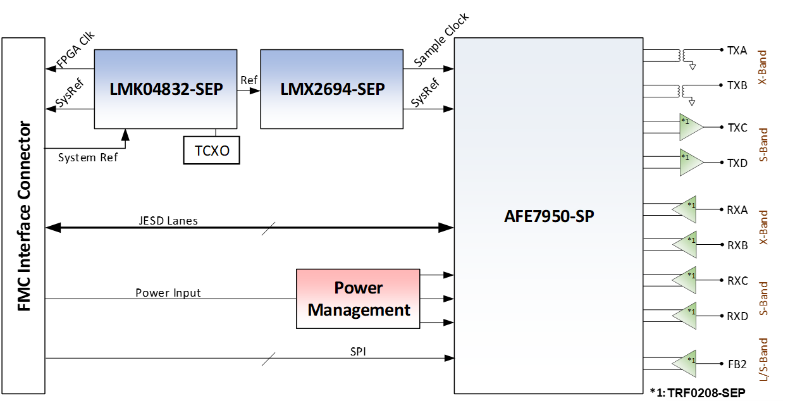 Figure 4 4T5R transceiver reference
design block diagram
Figure 4 4T5R transceiver reference
design block diagram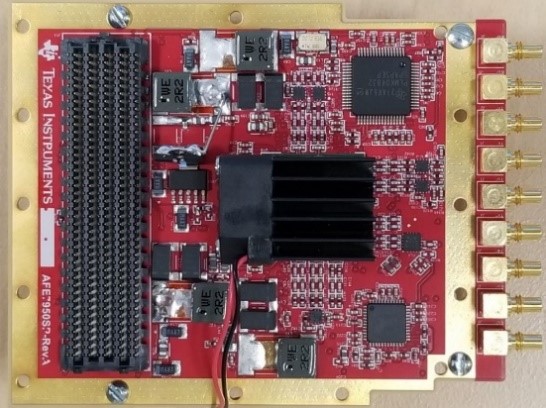 Figure 5 4T5R transceiver reference
design board picture
Figure 5 4T5R transceiver reference
design board pictureFor another reference design, TI partnered with Alpha Data to create a 6U VPX solution for the new AMD Versal FPGA, the XQRVC1902. This field-programmable gate array from Xilinx is a good fit for phased array applications given the large amount of programmable fabric and high-speed transceivers. The Alpha Data ADM-VA600 kit (see Figure 6) includes a complete power solution to meet the power demands of the Versal FPGA along with clocking, interface, sensing and microcontroller products from TI’s SEP devices. TI’s power-management devices include DC/DC converters, DC/DC controllers and gate drivers, load switches, and LDOs such as the TPS7H1111-SP and TPS7H1111-SEP.
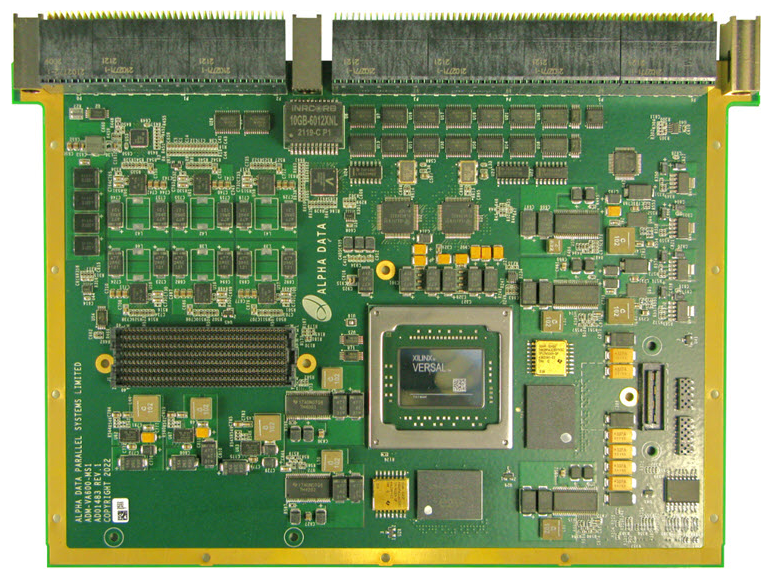 Figure 6 The ADM-VA600 modular board
design
Figure 6 The ADM-VA600 modular board
designConclusion
While phased array antenna systems add some complexity to system designs, they greatly increase the capabilities of next-generation satellite systems. The use of optimized components for these systems allows system designers to improve SWaP-C and add features in a similar form factor to legacy architectures.
Additional resources
- Watch the webinar ‘Improving SWaP-C for space-grade phased array antenna systems’ (Session 1: CEST and IST time zones | Session 2: CDT and PDT time zones)
- Stay up to date with newly released radiation-tolerant and radiation-hardened space products with the 2024 TI Space Products Guide
- For further information visit ti.com/space